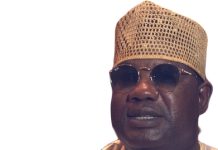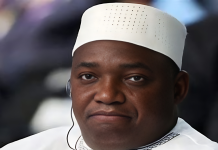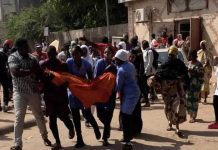By Kebba Jeffang
The Ministry of Petroleum and Energy, National Water and Electricity Company (NAWEC) with relevant national and international stakeholders are currently sitting over a 500 million US dollar (22,700 dalasis) roadmap update meant to permanently tackle the electricity problem before 2025.
This consultation on the draft roadmap document commenced on Tuesday, July 18, at Kairaba Beach Hotel and it is expected to end on the 19th July after it is validated for implementation.
The officials say the roadmap will curb frequent on and off system not later than 2017, and it has medium and long term plans that will permanently address power inefficiency within 8 years.
The Minister of Petroleum and Energy Fafa Sanyang said the current power situation of the country is the least desirable and therefore, the government and its development partners are resolved to permanently address the inherited perennial problems facing the energy sector.
He said: “Consequently, the ministry of petroleum and energy, NAWEC, ministry of finance and economic affairs, public utilities regulatory authority and other national stakeholders with technical assistance from the World Bank have kicked started the review and update of the Gambia electricity sector roadmap.”
Minister Sanyang said the primary focus of the roadmap update is to provide Least Cost Power Development Plan (LCPDP) that comprehensively determines investments required in power generations, transmission and distribution (T&D) as well as institutional restructuring of NAWEC to attract independent power producers (IPP).
He said the roadmap plan will offer policy choices available to the government to improve electricity service delivery and sector efficiency.
“The roadmap has 3 phases and the first one is aimed at minimizing disruptions and blackouts on the network and restore the greater Banjul area generation to at least 70 Mega Watts of available capacity by the end of 2017, and kick off preparation for the first IPP,” said Sanyang.
He said the second phase will be from 2018 to 2020 and will include closing the generation gap and investment on transmission and distribution as well as compassioning the first IPPs.
“The third phase aims to scale generation to 250MW of available capacity by 2025 and as well expand access. In order to have a balanced energy mix, priority would focus on renewables such as solar, wind and hydropower.
He said energy efficiency installations for schools, hospitals, hotels, manufacturing and cold storage plants are critical considerations made in the plan.
“Total investment in the sector is estimated at over $500 million through to 2025. Of this, $189 million is expected to come from the private sector through IPPs generation infrastructure and $334 million from the public sector. Of this public sector investments, $157 million is already committed or in the pipeline, leaving a gap of $177 million for transmission and distribution and access,” he indicated.
Meanwhile, the managing director of NAWEC, Baba Fatajo, said electricity situation in the Gambia has continued to experience tremendous challenges. He said due to such challenges, NAWEC in consultation with the government prepared a roadmap that aims to provide short, medium and long term solutions for sustainable development.
“The key critical areas of interventions identified include the generation, transmission and distribution and institutional strengthening as well as our quest to diversify the source of production by venturing into renewable energy,” said Fatajo.
He said the current predicament facing the electricity sub sector is as a result of aging, inefficient generators coupled with an unbearable debt burden as well as non-cost reflective tariff NAWEC is operating on.
Mr. Dawda Fadera, Secretary General and Head of Civil Service said the high level donor consultation and stakeholders’ conference on Gambia’s electricity roadmap is critically important for economic development as well as transformation and modernization of the country. He described energy as a pillar in economic growth and added stable electricity will attract investors.
“The energy situation in the country has fallen far from meeting the electricity needs of the country as power supply is erratic, inadequate, unreliable and unaffordable,” he said.
Mr. Chris Trimble, World Bank senior energy specialist said electricity is critical for the development of any economy, indicating that the current situation in the Gambia is far from that point.
“There is high expectation from the public on the government after six months in office without improvement,” he said.
He said the government should communicate to people as to what they are doing and how they are working out the situation but added that this roadmap has given that opportunity.
Mr. Amadou Sanneh, Minister of Finance and Economic Affairs said the work on the roadmap by the ministry of petroleum and NAWEC has been a difficult one before its completion. He said the roadmap is a light for the country to show the path to travel in the energy sector.
“All along, it has been crisis management, firefighting, all engines, high energy import base, inefficient transmission and distribution,” said Finance minister.
He expressed optimism that with this roadmap, the government will find a lasting solution.




















